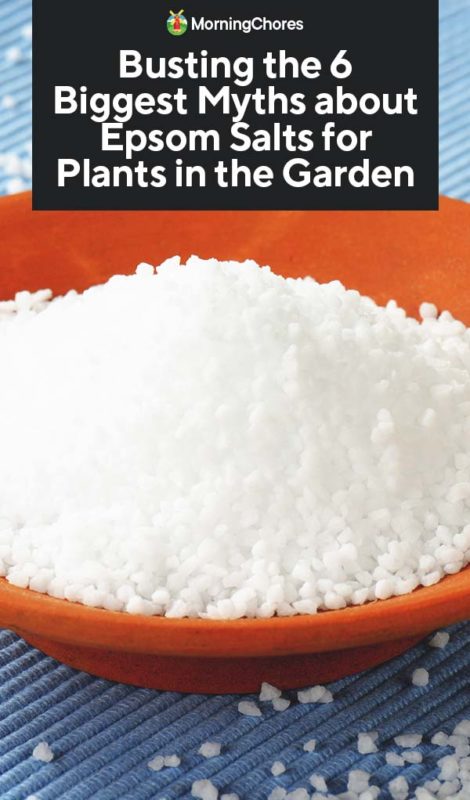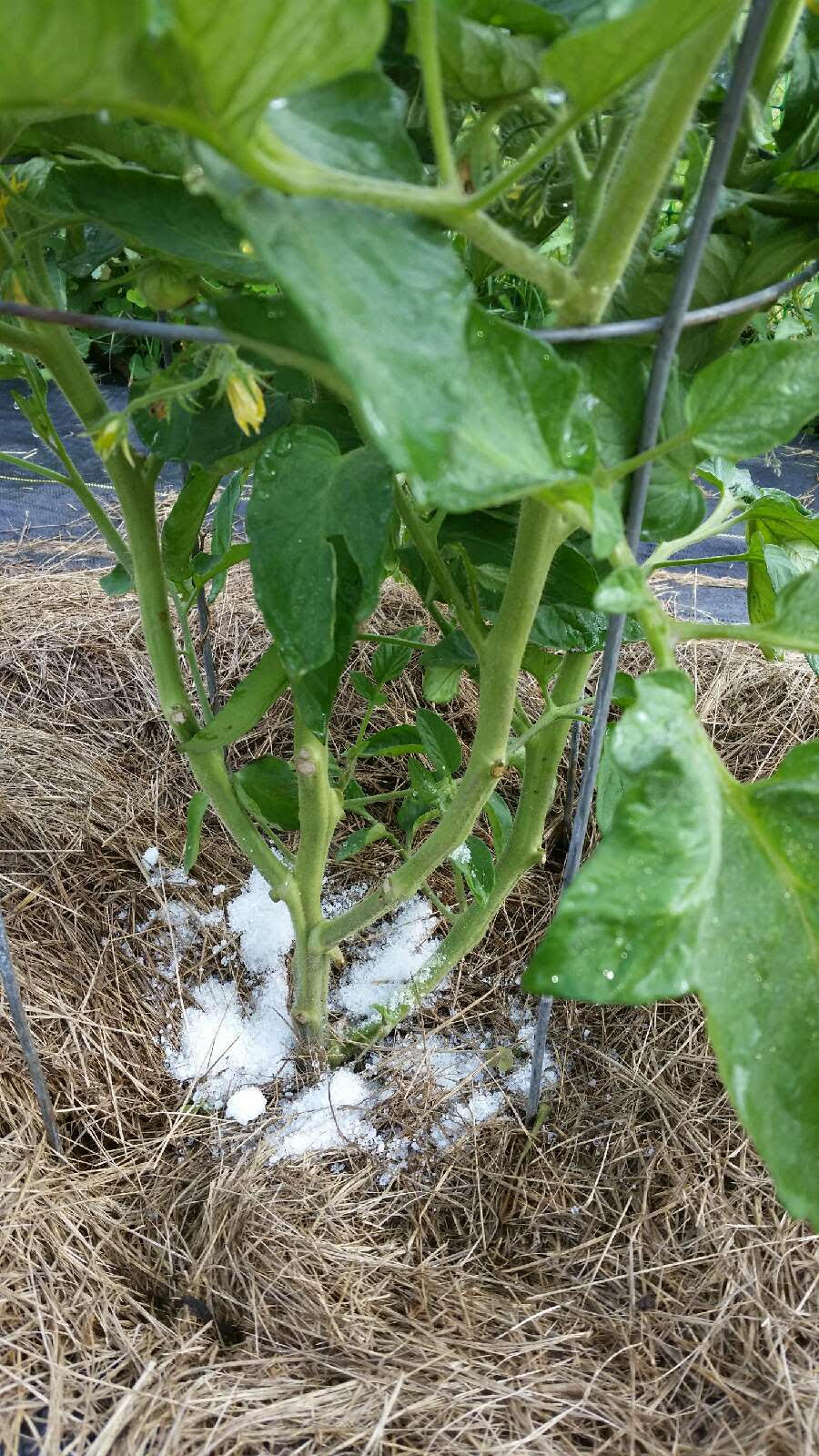Yard Mistakes: What Plants Don't Like Epsom Salt and Just How to Stay clear of Them
Yard Mistakes: What Plants Don't Like Epsom Salt and Just How to Stay clear of Them
Blog Article
Explore Why Some Plants Turn Down Epsom Salt as a Nutrient Source
In the detailed globe of plant nourishment, the rejection of Epsom salt as a feasible nutrient resource by some plants postures an appealing conundrum. Regardless of its abundant magnesium and sulfur content, specific plant types seem to reject this readily available substance. The factors behind this discerning actions look into a complex interplay of plant absorption systems, the distinct chemical framework of Epsom salt, and plant-specific nutrient choices. Recognizing these variables might shed light on the mysteries of why some plants opt out of using this seemingly valuable nutrient resource.
Plant Absorption Devices
In diving into the elaborate world of plant absorption mechanisms, it ends up being obvious that the process is governed by a sophisticated interplay of physiological dynamics and molecular pathways. Plants take in nutrients mainly with their origins, utilizing various transport systems to uptake vital aspects such as nitrogen, magnesium, phosphorus, and potassium. Magnesium, an important component in chlorophyll synthesis and enzyme activation, plays a critical function in plant development and development.
The absorption of magnesium involves a number of actions, starting with its schedule in the dirt option. Once liquified, magnesium ions are occupied by plant origins via certain transportation healthy proteins installed in the cell membranes. These healthy proteins help with the movement of magnesium across the origin cell wall surfaces and into the plant's vascular system, where it is then distributed to various tissues to support various physical features.
Understanding the complex devices behind magnesium absorption in plants drops light on exactly how this important nutrient contributes to general plant health and wellness and performance. By maximizing magnesium uptake pathways, growers can boost crop returns and top quality, highlighting the significance of understanding plant absorption dynamics for lasting agriculture techniques.
Epsom Salt Chemical Structure
The chemical structure of Epsom salt, also recognized as magnesium sulfate heptahydrate, reveals an unique plan of elements that add to its unique properties and applications - what plants don't like epsom salt. Epsom salt is made up of magnesium (Mg), sulfur (S), oxygen (O), and hydrogen (H) atoms. The formula MgSO4 · 7H2O shows that each molecule contains one magnesium atom, one sulfur atom, four oxygen atoms, and 14 hydrogen atoms. The presence of water molecules in its structure adds to its solubility in water. The 7 water molecules are freely bonded to the magnesium sulfate substance, allowing it to dissolve conveniently in water and be conveniently occupied by plants through their origins.
The crystal framework of Epsom salt forms monoclinic prisms, which are elongated crystals with parallel ends. This crystal form affects the physical homes of Epsom salt, such as its texture and solubility. Understanding the chemical structure of Epsom salt is essential for comprehending its habits as a nutrient resource and its communications with plants in farming and gardening techniques.
Plant-Specific Nutrient Preferences
Plants show distinct choices for particular nutrients, emphasizing the importance of comprehending their private needs for optimum growth and growth. Understanding these plant-specific nutrient preferences is essential for making best use of crop returns, improving ornamental plant growth, and advertising general plant health.

Plant-specific nutrient choices can additionally differ based on whether the plant is a monocot or dicot. By customizing nutrient supplements to meet the accurate requirements of each plant types, cultivators can optimize plant growth, decrease nutrient waste, and support sustainable agricultural practices.

Soil Ph and Nutrient Uptake
Provided the vital duty of plant-specific nutrient choices in optimizing development and health, understanding the connection in between dirt pH and nutrient uptake comes to be paramount. Dirt pH plays an important function in establishing the accessibility of essential nutrients Full Article for plant uptake. Different plants have varying pH preferences for optimum nutrient absorption. Acidic soils with a reduced pH are desirable for plants like azaleas and blueberries, while alkaline dirts with a higher pH suit plants such as lavenders and clematis.
Dirt pH affects the chemical kinds of nutrients in the dirt. In acidic soils, nutrients like light weight aluminum, manganese, and iron can come to be a lot more offered, but excessive level of acidity can lead to poisoning issues. On the other hand, alkaline dirts may limit the availability of nutrients like zinc, copper, and iron, impacting plant development. Preserving the appropriate pH level in the soil is important for ensuring that plants can successfully uptake the essential nutrients for their healthy and balanced advancement and productivity.
Hereditary Consider Nutrient Uptake
In the world of plant nutrition, the interaction of hereditary aspects substantially affects the uptake of crucial nutrients critical for plant growth and growth. Hereditary aspects play a pivotal function fit a plant's ability to absorb and use nutrients effectively. Variants in genes can influence the expression of transportation proteins accountable for relocating nutrients across cell membrane layers. These transportation proteins, such as networks and providers, are encoded by particular genetics that can vary amongst plant varieties and even within the same types.
Moreover, genetic aspects also figure out the effectiveness of nutrient uptake devices within plants. As an example, some plants might possess genetic attributes that boost their capacity to feed on nutrients from the soil effectively, providing them a competitive advantage in nutrient-poor settings. On the other hand, genetic variations can additionally bring about constraints in nutrient uptake, ensuring plants a lot more susceptible to shortages even when nutrients are plentiful in the dirt.
Recognizing exactly how hereditary elements influence nutrient uptake is critical for developing methods to optimize plant nutrition and boost plant performance in numerous agricultural setups. By unwinding the genetic devices entailed in nutrient uptake, scientists can function in the direction of developing genetically improved plant varieties with boosted nutrition purchase abilities.
Conclusion

In the complex globe of plant nourishment, the being rejected of Epsom salt as a practical nutrient resource by some plants presents an appealing quandary. what plants don't like epsom salt. Comprehending these plant-specific nutrient preferences is vital for making best use of plant yields, improving decorative plant growth, and advertising overall plant health
By tailoring nutrient supplements to satisfy the precise requirements of each plant blog types, farmers can optimize plant development, minimize nutrient waste, and support lasting farming practices.
In the world of plant nourishment, the interplay of hereditary factors considerably influences the uptake of essential nutrients essential for plant development and growth. Recognizing these intricacies in plant nutrient uptake is crucial for enhancing plant development and health in agricultural techniques.
Report this page